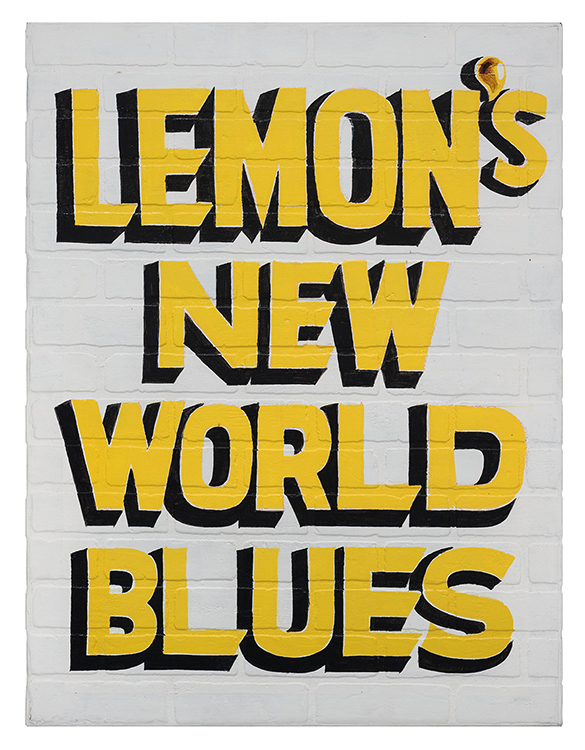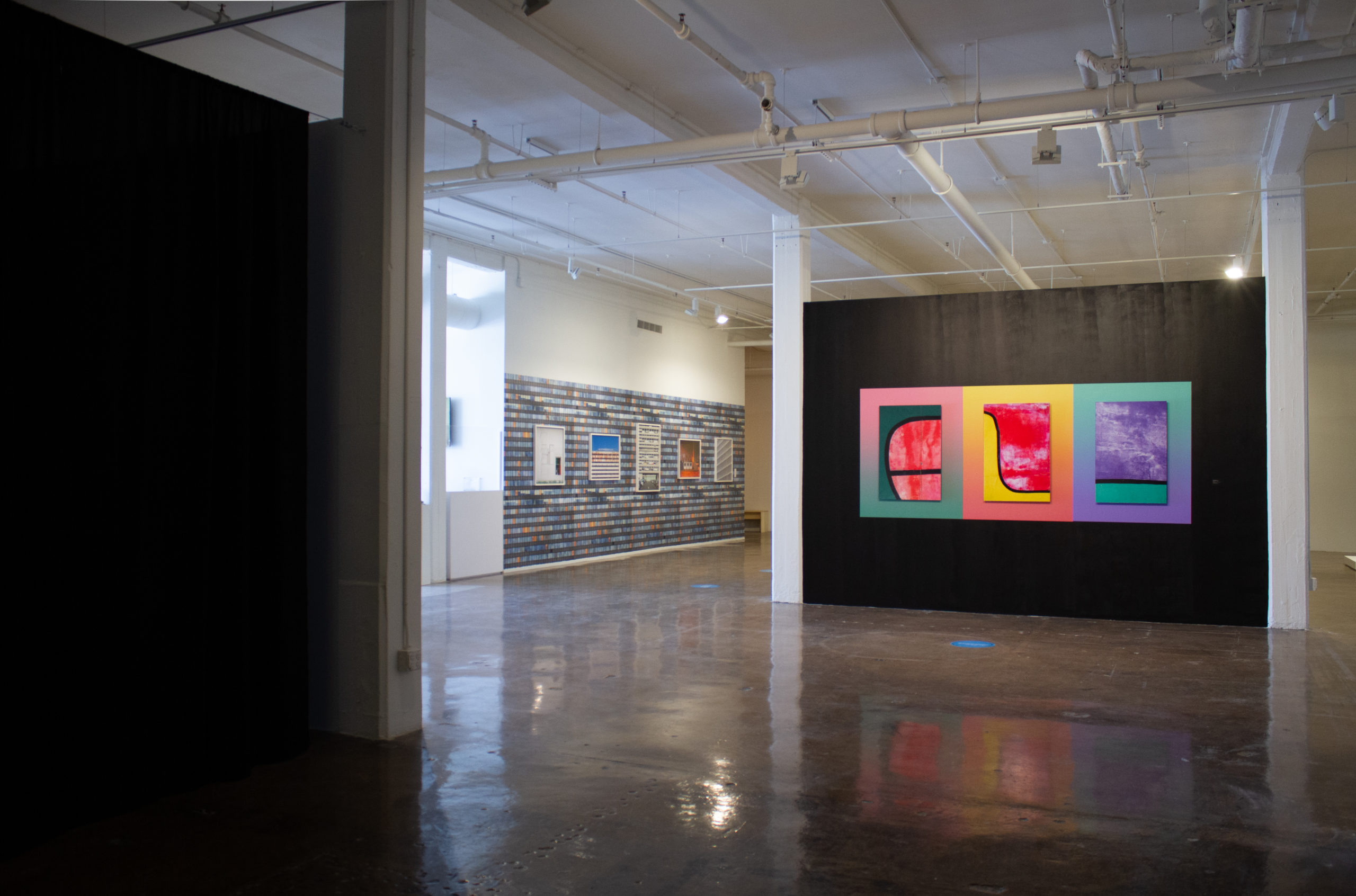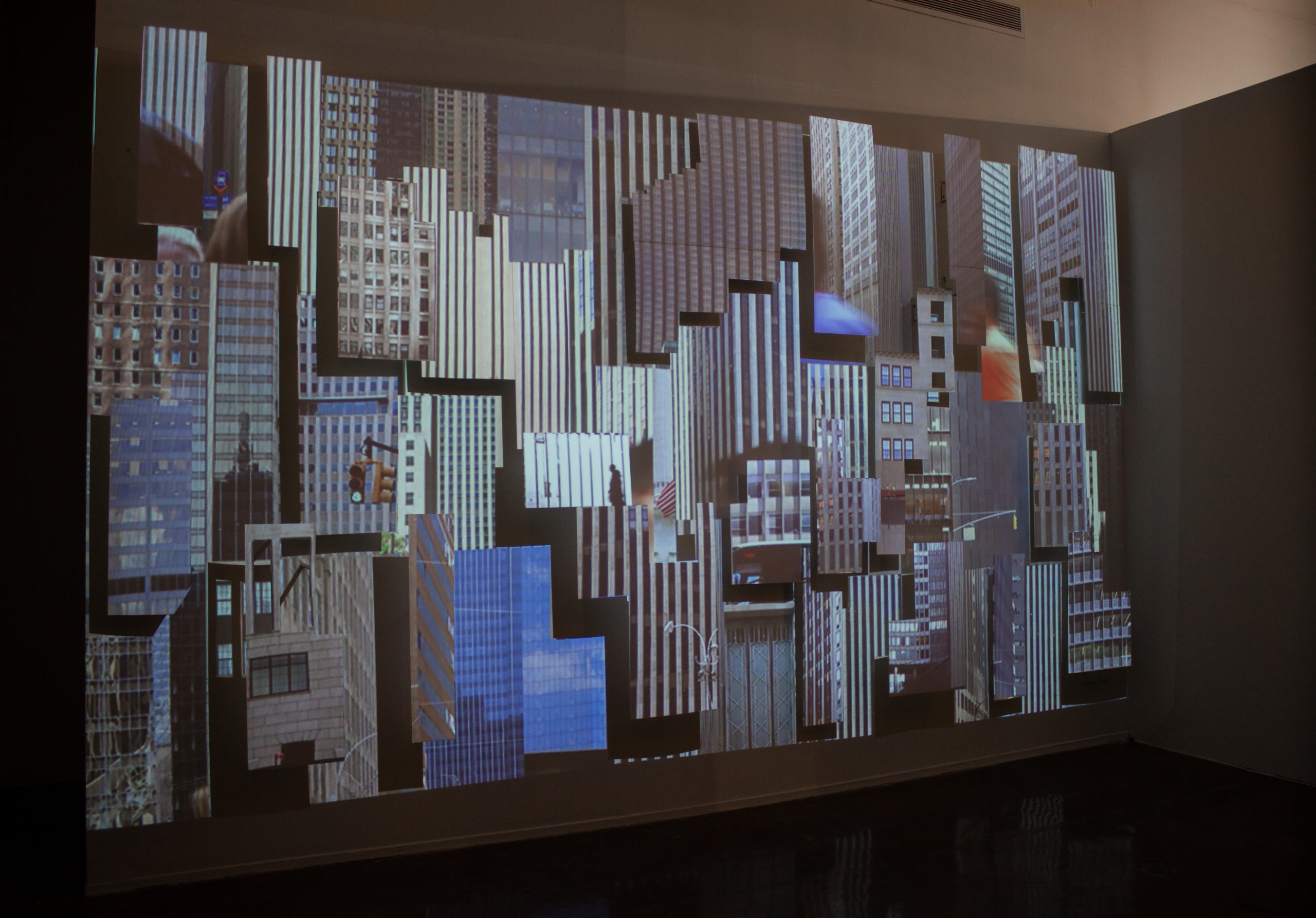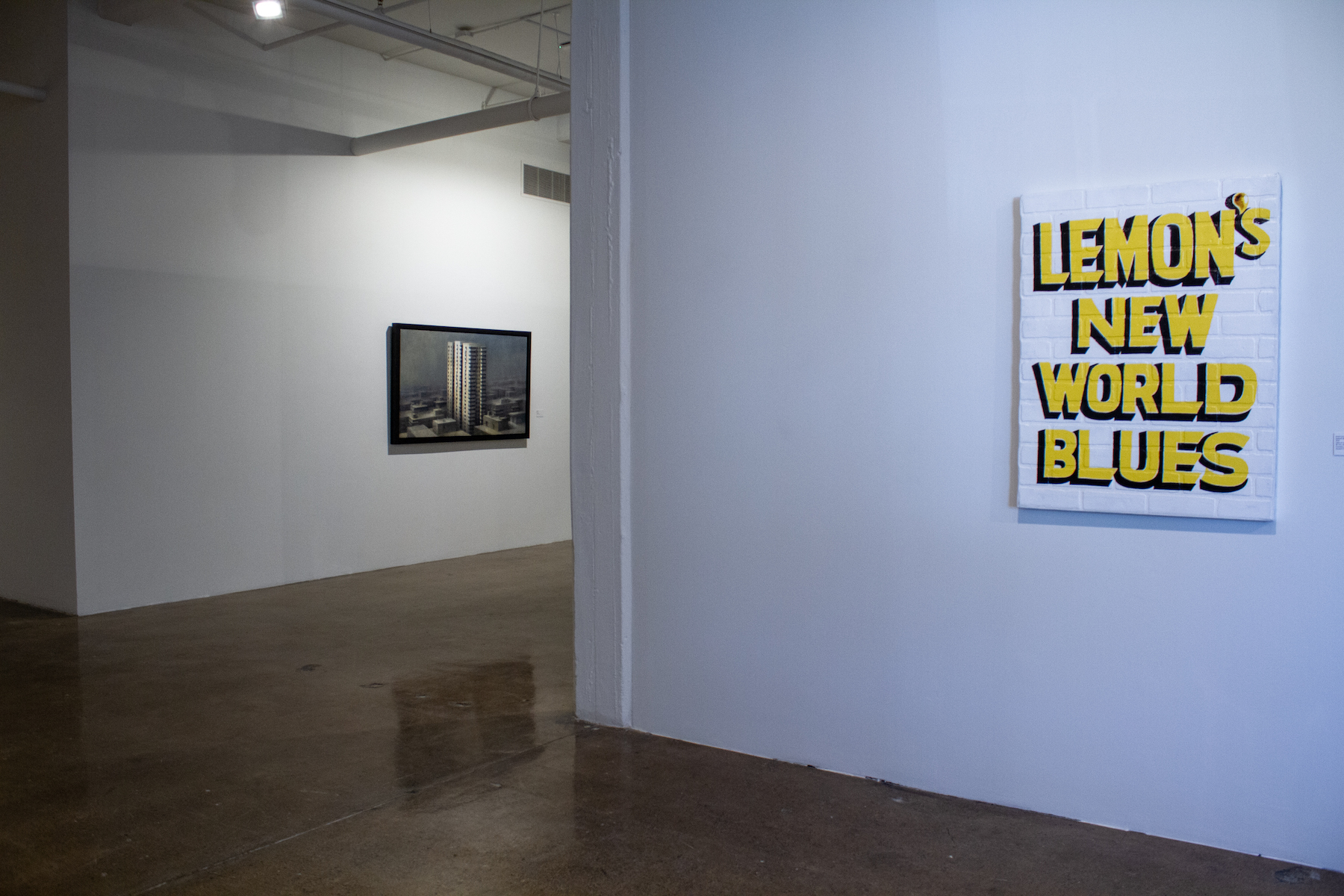Please Form A Straight Line
Nov 6, 2020–May 9, 2021
Image Gallery

Jamal Cyrus, Lemon’s New World Blues, 2014.

Installation view. Please Form A Straight Line at BSC, 2020. Image courtesy of BSC.

Installation view. Please Form A Straight Line at BSC, 2020. Image courtesy of BSC.

Installation view. Yuge Zhou, Midtown Flutter, 2019. Please Forma A Straight Line at BSC. Image courtesy of BSC.

Installation view. Please Form A Straight Line at BSC, 2020. Image courtesy of BSC.
Please Form A Straight Line
Nov 6, 2020–May 9, 2021
Main Gallery
November 6, 2020 – May 9, 2021
Featuring the work of artists Jamal Cyrus, Maggie Evans, Benjamin S Jones, Yuge Zhou, Frances Lightbound, Mark Menjivar, Jingjing Lin, and Jorge Villarreal.
Please Form A Straight Line is a timely, diverse, and innovative group exhibition exploring themes of collectivity, the municipal, property, architecture, and the control and regulation of bodies. These themes intersect where they prompt viewers to consider how society, physically and existentially, is designed. The exhibition acts as a mirror to our current realities and a vehicle to process these experiences. The title calls to mind a range of occurrences, from lining up in primary school, to waiting at the DMV, to more recently imposed 6-foot safety zones and other social distancing protocols. The works suggest the social contracts we subscribe to and build a conversation around civic and social roles as individuals belonging to a whole.
The paintings of Maggie Evans’ Collective Behavior series delve into the propensity towards unified action and its resulting power structures and homogeneity. The work emphasizes the unsettling nature of uniformity.
Jamal Cyrus also considers repetition, perhaps also a type of unified action, though spanning time. I Won’t Even Mention Gold and Lemon’s New World Blues are collaborations with Houston sign painter, Walter Stanciell. Both paintings feature quotations–one from a painting by Jean-Michel Basquiat and one from a poem by K Curtis Lyle. This reiterance of quoted text asks what happens when a phrase, seemingly ambiguous, is repeated in different contexts, in multiple forms and materials, by a multitude of people. The faux brick, akin to the surfaces Stanciell customarily paints on, references the built environment. This surface and process–hand painting text signage–accentuates the presence of hand, labor, and how we communicate with one another, in this instance on (pseudo) architecture; but also, through poetry and painting.
Jorge Villarreal’s abstract series of photographs isolating areas of graffiti on remnants of the Berlin Wall further delve into the significance of mark making on architecture as forms of communication and protest, and time and context playing a key role in the meaning of these actions.
Villarreal’s photographs shot in Berlin, many of Le Corbusier-designed buildings, focus on structures based on the architect’s Modulor theory which he believed could give harmony to everything, from door handles to cabinets to urban spaces. While many have strongly critiqued this system, other photographs in Villareal’s series show its lasting influence.
Benjamin S. Jones’ sculptures from his series Frontiers are a study of the topography, politics, and ethos of the contemporary American west. The hybrid forms explore current conflicts surrounding immigration, property rights, water rights, and political boundaries.
Yuge Zhou’s playful and experimental video installation Midtown Flutter utilizes three-dimensional laser cut panels inspired by the concept of architectural relief. They illustrate ideas such as social synchronization, a phenomenon where individuals within a group influence one another’s behavioral patterns.
The 64 photopolymer prints entitled Lot Lines by Frances Lightbound document plaques in Chicago marking property lines. Lightbound’s work focuses on the built environment, boundaries, and thresholds, to encourage a heightened awareness of the body’s relationship to constructed spaces.
Jingjing Lin’s digital panel works We Are Free to Choose but We are Not Free from the Consequences of Our Choices: Arrival and Departure, take the language of airport flight monitors and integrate emotions, values, and character traits, provoking us to consider our successes and short comings. Additionally, her video A New Dawn for America features a campaign speech delivered by an AI candidate for President, in an artwork that is part satire and part science fiction.
Mark Menjivar’s DLP consists of a photograph and an index of the complete contents of David Lee Powell’s cell at the time of his execution in 2010, after spending 32 years on death row (the longest of any prisoner in the US). Though the work is predominantly text, reading the meticulous record of each personal effect creates an image for the viewer. One can visualize what it might be like to occupy a 6 x 9-foot cell and get a greater sense of the life the objects were connected to. As we consider each object on the list, David Lee Powell becomes more prominent than the criminal justice system and prison architecture he occupied. The installation is part of Menjivar’s ongoing work as artist in residence with the Texas After Violence Project and efforts to create community dialogue addressing capital punishment.
Exploring the influence of the built environment, repetition and cultural exchange, and institutions of government, I bring together a range of global perspectives on the theme of control with this multifaceted group of artists whose artworks span a range of unconventional media. Lastly, underpinning the exhibition is the presence of the grid, a significant and prevailing structure to the history of urban planning, architecture, and visual art. The grid can be considered abstractly, illustrating ideas of order, pattern, and control. Here, the artistic impulse is to draw attention to the notion that the spaces and systems we occupy are designed to control, mediate, guide, and form us as individuals and societies. Given their ubiquity, renewed awareness and constant critique is required because they can easily become unseen.
– Jacqueline Saragoza McGilvray, Curator and Exhibitions Manager
*A companion solo exhibition, by Mark Menjivar Birds, Rats, Roses, further investigating themes of capital punishment and contents of the DLP archive is on view now at Sala Diaz.
Sala Diaz is located at 517 Stieren St, San Antonio, TX 78210. Call 210 241 7364 to make your viewing appointment.